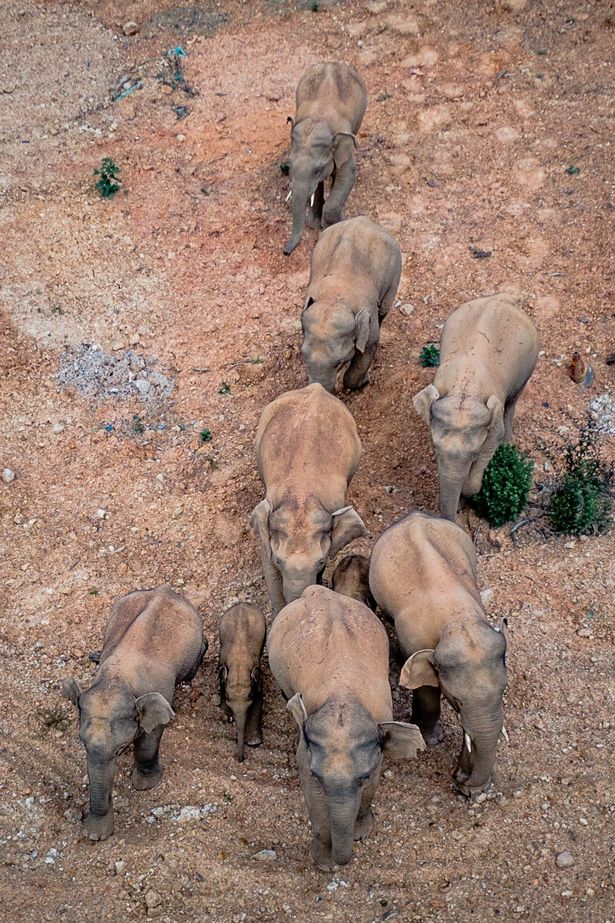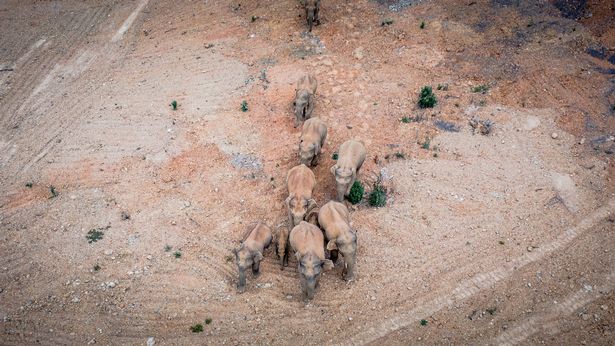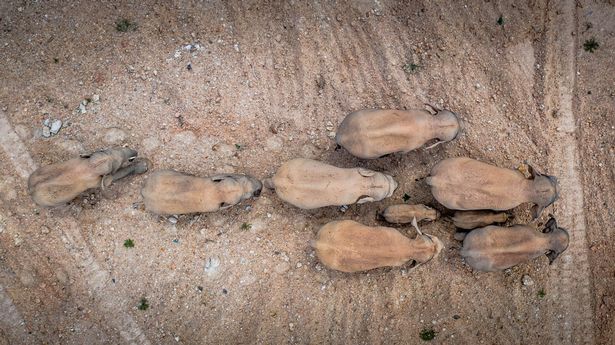A herd of 15 wild elephants wandered through two cities leaving a 300-mile trail of destruction yesterday.
Authorities have scrambled to ensure the animals don’t seriously hurt anyone after roaming through Kunming and Yuxi in southwest China.
More than 600 emergency workers, including police, and 12 drones were dispatched to monitor the herd, which included three baby elephants.
Kunming alone prepared 10 tons of elephant food, including corn and pineapples.
Zhang Li, a field wildlife biologist and professor on mammal conservation at Beijing Normal University, said: “Currently, the priority should be prevention and control around the villages and towns to prevent elephants from entering the villages and hurting people.

(Image: Xinhua/REX/Shutterstock)
“To avoid further human-elephant conflict, the elephants should be guided to less densely populated areas.”
And, as Global Times reports, there are large forests around the cities the elephants could inhabit. However, it is feared they’ll be much less food there.
It is thought the creatures began their mammoth journey from Xishuangbanna National Nature Reserve in south China.
It is the furthest a herd of wild elephants in Xishuangbanna has ever travelled away from that habitat.

(Image: Xinhua/REX/Shutterstock)
Experts say the herd has travelled such a great distance, it might be unlikely that they return to their original habitat.
But Zhang Li pointed out the elephants are in a nervous state as they’ve entered a more densely populated area with greater human interference.
He suggested that remote sensing satellite data analysis can be used to guide the elephant herd to a suitable habitat on its migration process.

(Image: Xinhua/REX/Shutterstock)
While they don’t grow as large as the African elephant, Asian elephants can reach sizes of 5,500 kg.
The males have tusks, the heaviest of which has measured at 39kg.
National Geographic says the Asian elephant is becoming endangered.
Threats to wild Asian elephant populations include habitat loss from deforestation and agricultural development.
There are an estimated 20,000 to 40,000 Asian elephants left in the wild.


